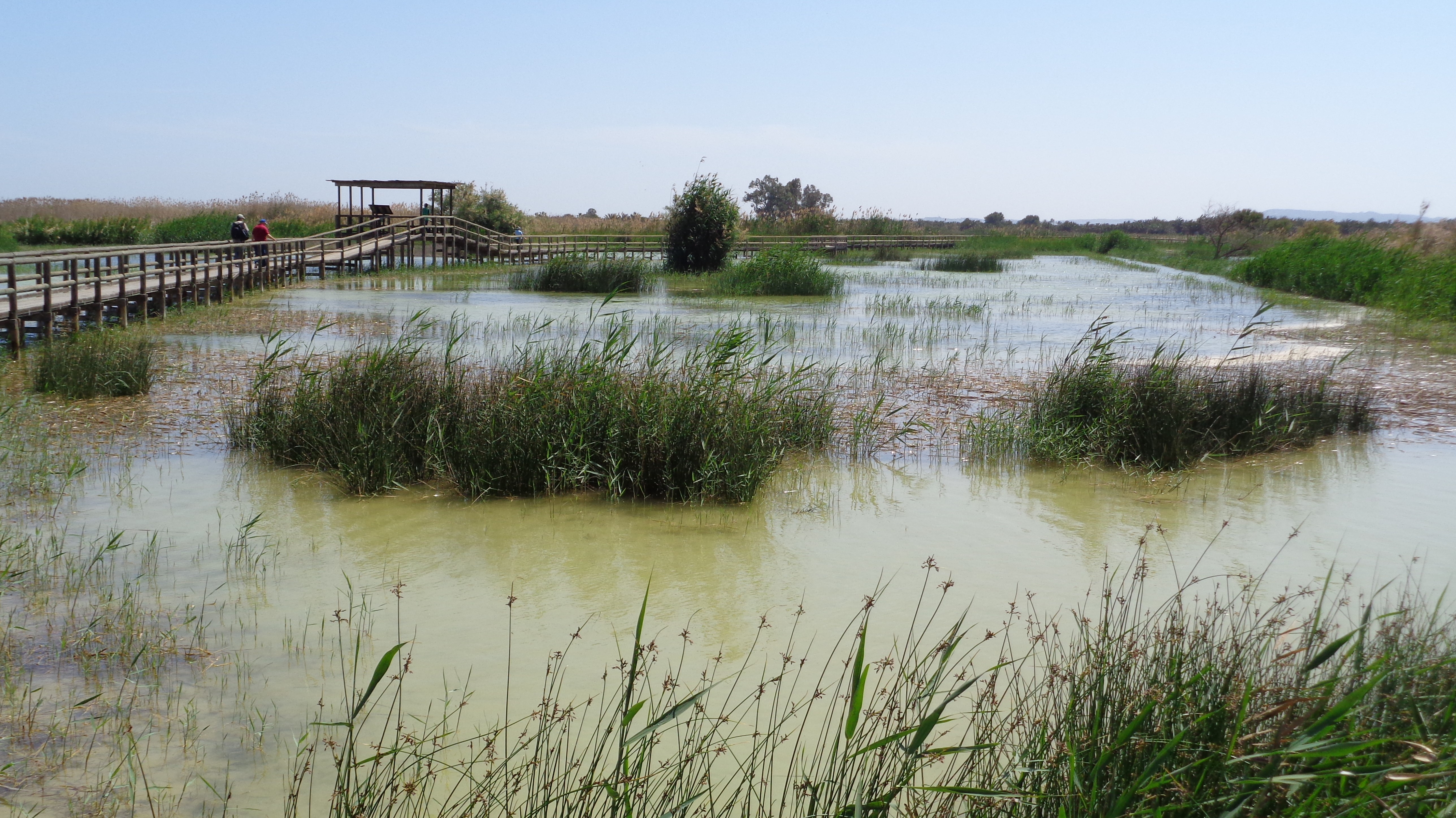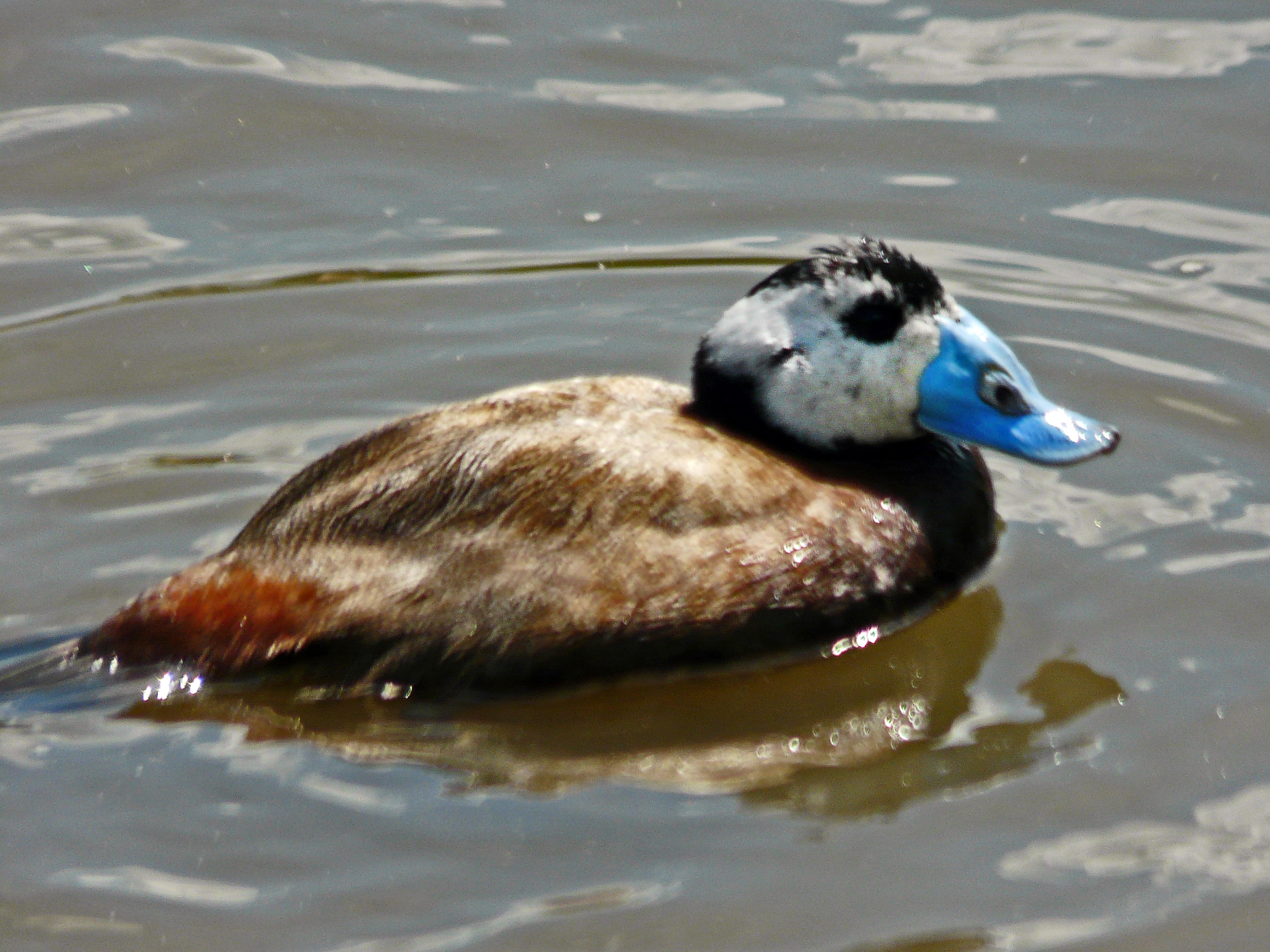|
Natural Park Of El Fondo
The Natural Park of El Fondo ( ca-valencia, Parc Natural del Fondo, es, Parque Natural de El Hondo) is located within the municipal boundaries of Elche and Crevillent both of which are within the ''comarca'' (district) of Baix Vinalopó in the south of the Valencian Community in the east of Spain. Both the rivers Vinalopó and Segura discharge into the lagoons that form this park. The park is included in the Ramsar convention Ramsar list of wetlands of international importance, list of protected wetlands and as a Special Protection Area under the European Union Birds Directive, Directive on the Conservation of Wild Birds. It has an area of 2,495 hectares and was declared a Natural Park by the Valencian government (Generalitat Valenciana) on 12 December 1988. Topography and climate This natural park is formed by a number of lagoons, of which the two largest are manmade and are called Levante, which has a surface area of 450 hectares and Poniente, with an area of 650 hectares ... [...More Info...] [...Related Items...] OR: [Wikipedia] [Google] [Baidu] |
Crevillent
Crevillent ( es, Crevillente) is a town and municipality located in the Alicante province, part of the Valencian Community, Spain. It is situated in the ''comarca'' of Baix Vinalopó, and lies at the foot of the hill range known locally as Serra de Crevillent. , it has a total population of 28,609 inhabitants. The terrain is dry, and its main vegetation is composed by carob trees, almond trees, olive trees and ''esparto''. Crevillent is a major producer and exporter of carpets and pomegranates. The town was probably settled by Romans. In 1263, during the period known as ''Reconquista'', James I of Aragon captured the city from the Moors and became a part of the Kingdom of Valencia. The most important tourist places of the city is a museum with works of Mariano Benlliure, a Valencian sculptor. Also remarkable is its '' Moors and Christians'' festival. Many of the agricultural areas, particularly El Realengo, contain ruins of prisons, ovens and torture houses used during Fra ... [...More Info...] [...Related Items...] OR: [Wikipedia] [Google] [Baidu] |
White-headed Duck
The white-headed duck (''Oxyura leucocephala'') is a small diving duck some long. The male has a white head with black crown, a blue bill, and reddish-grey plumage. The female has a dark bill and rather duller colouring. Its breeding habitat is lakes with open water and dense vegetation at the margin. It dives under water and feeds on aquatic vegetation as well as some animal matter. It is more likely to swim away from a perceived threat than to fly. This duck is known from Spain, North Africa, Western Asia and Central Asia. Populations are declining, mostly due to loss of habitat and pollution, and the International Union for Conservation of Nature has rated the bird's status as "endangered". Taxonomy and systematics The white-headed duck was originally described as ''Anas leucocephala'' by Giovani Antonio Scopoli in 1769. It is currently in the genus Oxyura. Other generic synonyms used in the past include ''Erismatura'', ''Cerconectes'', ''Gymnura'', ''Undina'', ''Bythones ... [...More Info...] [...Related Items...] OR: [Wikipedia] [Google] [Baidu] |
Marbled Duck
The marbled duck, or marbled teal (''Marmaronetta angustirostris'') is a medium-sized species of duck from southern Europe, northern Africa, and western and central Asia. The scientific name, ''Marmaronetta angustirostris'', comes from the Greek ''marmaros'', marbled and ''netta'', a duck, and Latin ''angustus'', narrow or small and ''-rostris'' billed. Distribution, habitat and breeding This duck formerly bred in large numbers in the Mediterranean region, but is now restricted to a few sites in southern Spain, southern Italy, northwest Africa and the broader Levant. Further east it survives in the Mesopotamian marshland in southern Iraq and in Iran (Shadegan Marshes - the world's most important site), as well as isolated pockets in Armenia, Azerbaijan, South European Russia, western India and western China. In general the species has nomadic tendencies. In some areas birds disperse from the breeding grounds, and have been encountered in the winter period in the Sahel zone, so ... [...More Info...] [...Related Items...] OR: [Wikipedia] [Google] [Baidu] |
Spanish Toothcarp
The Spanish toothcarp (''Aphanius iberus''), also known as the Spanish pupfish or Iberian killifish, is a small, endemic species of fish in the family Cyprinodontidae. Its risk of extinction is one of the greatest of any Iberian vertebrate. Its limited range, coupled with the drastic population decline the species has suffered in the last two decades, has caused it to be placed on endangered species lists, both in Spain and internationally. In addition, habitat fragmentation, likely due to humans, has resulted in this species becoming increasingly stagnant and has led to increased genetic drift. Also found to be contributing to their endangerment was genetic diversity of mitochondrial DNA. The mitochondrial DNA coupled with A. iberus’s geographic distribution has been able to affect their population genetic structure gradually in different spaces. Its conservation status in the south of the Iberian peninsula has notably worsened. A similar fish in the peninsula's south-west h ... [...More Info...] [...Related Items...] OR: [Wikipedia] [Google] [Baidu] |
Fresh Water Shrimp
Freshwater shrimp are any shrimp which live in fresh water. This includes: *Any Caridea (shrimp) which live in fresh water, especially the family Atyidae *Species in the genus '' Macrobrachium'' :*'' Macrobrachium ohione'', the Ohio River shrimp :*''Macrobrachium carcinus'', sometimes called the American giant freshwater prawn :*''Macrobrachium rosenbergii'', also known as the giant river prawn, giant freshwater prawn or cherabin *Any amphipod living in fresh water, especially: :*''Gammarus pulex ''Gammarus pulex'' is a species of amphipod crustacean found in fresh water across much of Europe. It is a greyish animal, growing to long. Description Adult males of ''Gammarus pulex'' may reach a total length of , while females only grow to . ...'' {{Animal common name Former disambiguation pages converted to set index articles ... [...More Info...] [...Related Items...] OR: [Wikipedia] [Google] [Baidu] |
Grey Mullet
Grey mullet can mean any of several fish in the family ''Mugilidae'' (the mullets) and having a greyish hue: * Flathead grey mullet, ''Mugil cephalus'' * Thicklip grey mullet, ''Chelon labrosus'' * Boxlip grey mullet, ''Oedalechilus labeo'' * Leaping grey mullet, ''Liza saliens The leaping mullet (''Chelon saliens'') is a species of fish in the family Mugilidae. It is found in coastal waters and estuaries in the northeast Atlantic, ranging from Morocco to France, and including the Mediterranean and Black Sea. It has bee ...'' * Thinlip grey mullet, '' Liza ramada'' {{Animal common name ... [...More Info...] [...Related Items...] OR: [Wikipedia] [Google] [Baidu] |
Eels
Eels are ray-finned fish belonging to the order Anguilliformes (), which consists of eight suborders, 19 families, 111 genera, and about 800 species. Eels undergo considerable development from the early larval stage to the eventual adult stage and are usually predators. The term "eel" is also used for some other eel-shaped fish, such as electric eels (genus ''Electrophorus''), spiny eels (family Mastacembelidae), swamp eels (family Synbranchidae), and deep-sea spiny eels (family Notacanthidae). However, these other clades evolved their eel-like shapes independently from the true eels. Eels live both in salt and fresh water, and some species are catadromous. Description Eels are elongated fish, ranging in length from in the one-jawed eel (''Monognathus ahlstromi'') to in the slender giant moray. Adults range in weight from to well over . They possess no pelvic fins, and many species also lack pectoral fins. The dorsal and anal fins are fused with the caudal fin, formin ... [...More Info...] [...Related Items...] OR: [Wikipedia] [Google] [Baidu] |
Salt Marsh
A salt marsh or saltmarsh, also known as a coastal salt marsh or a tidal marsh, is a coastal ecosystem in the upper coastal intertidal zone between land and open saltwater or brackish water that is regularly flooded by the tides. It is dominated by dense stands of salt-tolerant plants such as herbs, grasses, or low shrubs. These plants are terrestrial in origin and are essential to the stability of the salt marsh in trapping and binding sediments. Salt marshes play a large role in the aquatic food web and the delivery of nutrients to coastal waters. They also support terrestrial animals and provide coastal protection. Salt marshes have historically been endangered by poorly implemented coastal management practices, with land reclaimed for human uses or polluted by upstream agriculture or other industrial coastal uses. Additionally, sea level rise caused by climate change is endangering other marshes, through erosion and submersion of otherwise tidal marshes. However, recent ackn ... [...More Info...] [...Related Items...] OR: [Wikipedia] [Google] [Baidu] |
Eutrophication
Eutrophication is the process by which an entire body of water, or parts of it, becomes progressively enriched with minerals and nutrients, particularly nitrogen and phosphorus. It has also been defined as "nutrient-induced increase in phytoplankton productivity". Water bodies with very low nutrient levels are termed oligotrophic and those with moderate nutrient levels are termed mesotrophic. Advanced eutrophication may also be referred to as dystrophic and hypertrophic conditions. Eutrophication can affect freshwater or salt water systems. In freshwater ecosystems it is almost always caused by excess phosphorus. In coastal waters on the other hand, the main contributing nutrient is more likely to be nitrogen, or nitrogen and phosphorus together. This depends on the location and other factors. When occurring naturally, eutrophication is a very slow process in which nutrients, especially phosphorus compounds and organic matter, accumulate in water bodies. These nutrients deriv ... [...More Info...] [...Related Items...] OR: [Wikipedia] [Google] [Baidu] |
Salinity
Salinity () is the saltiness or amount of salt dissolved in a body of water, called saline water (see also soil salinity). It is usually measured in g/L or g/kg (grams of salt per liter/kilogram of water; the latter is dimensionless and equal to ‰). Salinity is an important factor in determining many aspects of the chemistry of natural waters and of biological processes within it, and is a thermodynamic state variable that, along with temperature and pressure, governs physical characteristics like the density and heat capacity of the water. A contour line of constant salinity is called an ''isohaline'', or sometimes ''isohale''. Definitions Salinity in rivers, lakes, and the ocean is conceptually simple, but technically challenging to define and measure precisely. Conceptually the salinity is the quantity of dissolved salt content of the water. Salts are compounds like sodium chloride, magnesium sulfate, potassium nitrate, and sodium bicarbonate which dissolve into ions ... [...More Info...] [...Related Items...] OR: [Wikipedia] [Google] [Baidu] |




